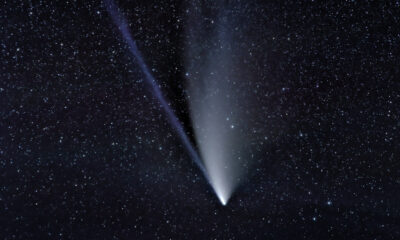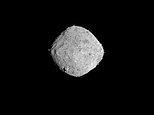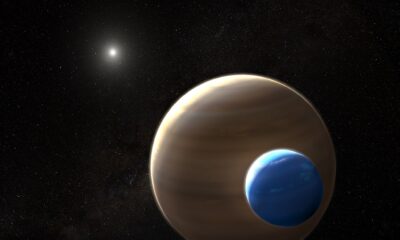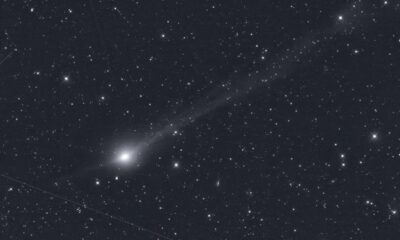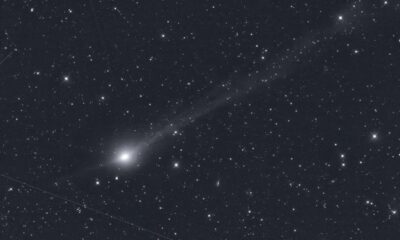Science
Scottish Scientists Identify Potential Atmosphere on Distant Planet
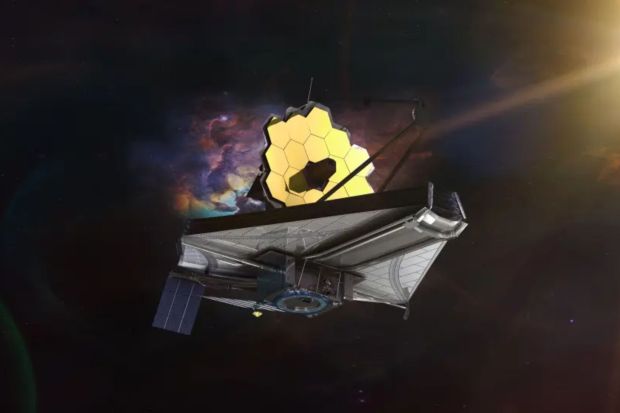
Scientists at the University of St Andrews have made significant strides in the search for extraterrestrial life by identifying a potential atmosphere on the Earth-sized planet TRAPPIST-1e. Located approximately 40 light years from Earth, this discovery could pave the way for understanding whether the planet might support life.
Part of an international research initiative, the team has utilized the James Webb Space Telescope (JWST), launched in December 2021, to investigate the characteristics of TRAPPIST-1e, which is the fourth planet in the TRAPPIST-1 system orbiting a red dwarf star. Initial findings suggest that the planet may possess an atmosphere conducive to sustaining liquid water, a key ingredient for life.
Dr. Ryan MacDonald, a lecturer in extrasolar planets at the University, expressed enthusiasm about the findings, stating, “TRAPPIST-1e has long been considered one of the best habitable zone planets to search for an atmosphere.” The research team faced challenges due to interference from the star’s activity, which complicated their data analysis.
To enhance their observations, the researchers employed the JWST’s advanced NIRSpec (Near-Infrared Spectrograph) instrument as TRAPPIST-1e transited in front of its parent star. This allowed them to analyze the light filtering through the planet’s atmosphere, if present, to determine its chemical composition.
While promising, the initial results indicate two possible scenarios. Dr. MacDonald noted that “the most exciting possibility is that TRAPPIST-1e could have a so-called secondary atmosphere containing heavy gases like nitrogen.” However, the data has not yet ruled out the possibility that the planet could be a barren rock with no atmosphere.
The research team dedicated over a year to correcting data affected by the red dwarf star’s magnetic fields, which created starspots that complicated their observations. With each subsequent JWST transit observation, scientists expect to clarify the atmospheric conditions around TRAPPIST-1e.
Dr. MacDonald added, “In the coming years, we will go from four JWST observations of TRAPPIST-1e to nearly 20. We finally have the telescope and tools to search for habitable conditions in other star systems, which makes today one of the most exciting times for astronomy.”
As the team pursues further observations, the implications of their findings could provide valuable insights into the potential for life beyond our planet, marking a pivotal moment in the ongoing quest to understand the universe’s mysteries.
-

 Entertainment3 months ago
Entertainment3 months agoAnn Ming Reflects on ITV’s ‘I Fought the Law’ Drama
-

 Entertainment4 months ago
Entertainment4 months agoKate Garraway Sells £2 Million Home Amid Financial Struggles
-

 Health3 months ago
Health3 months agoKatie Price Faces New Health Concerns After Cancer Symptoms Resurface
-

 Entertainment3 weeks ago
Entertainment3 weeks agoCoronation Street Fans React as Todd Faces Heartbreaking Choice
-

 Entertainment3 months ago
Entertainment3 months agoCoronation Street’s Carl Webster Faces Trouble with New Affairs
-

 Entertainment3 months ago
Entertainment3 months agoWhere is Tinder Swindler Simon Leviev? Latest Updates Revealed
-

 World3 weeks ago
World3 weeks agoBailey Announces Heartbreaking Split from Rebecca After Reunion
-

 Entertainment4 months ago
Entertainment4 months agoMarkiplier Addresses AI Controversy During Livestream Response
-

 Science2 months ago
Science2 months agoBrian Cox Addresses Claims of Alien Probe in 3I/ATLAS Discovery
-

 Health5 months ago
Health5 months agoCarol Vorderman Reflects on Health Scare and Family Support
-

 Entertainment4 months ago
Entertainment4 months agoKim Cattrall Posts Cryptic Message After HBO’s Sequel Cancellation
-

 Entertainment3 months ago
Entertainment3 months agoOlivia Attwood Opens Up About Fallout with Former Best Friend

